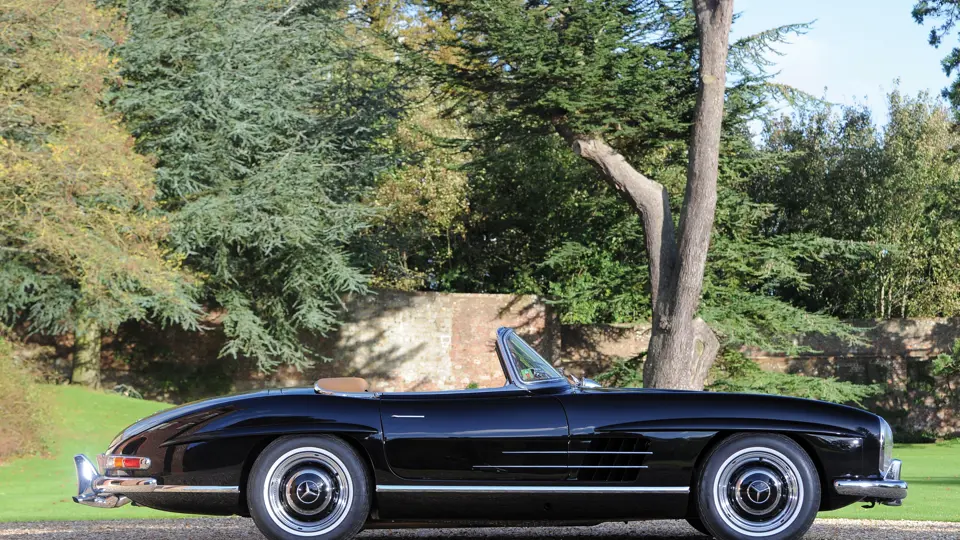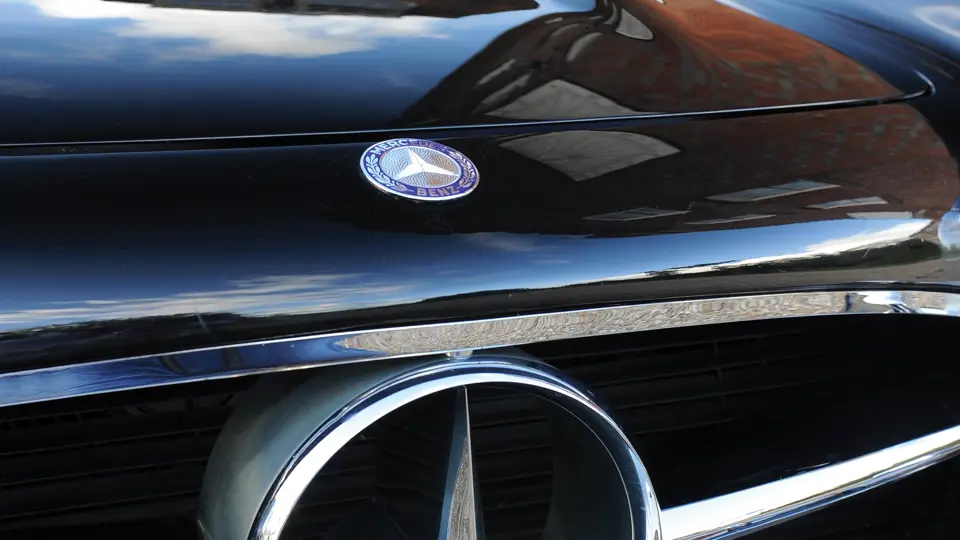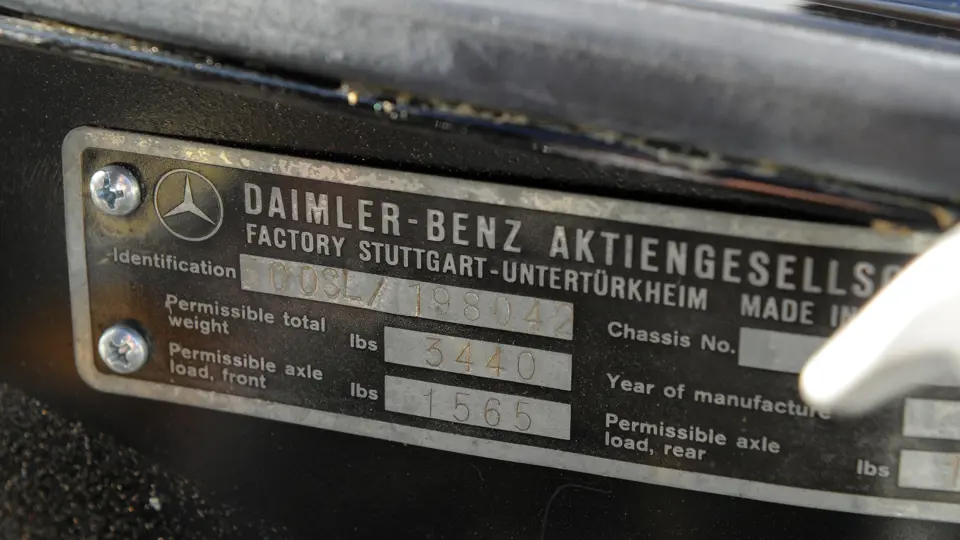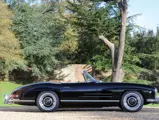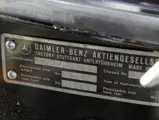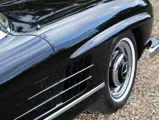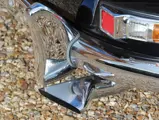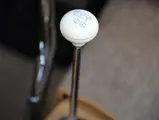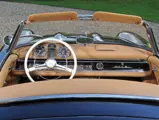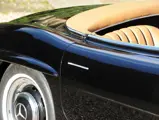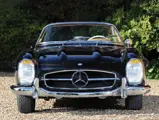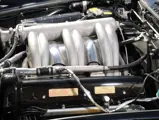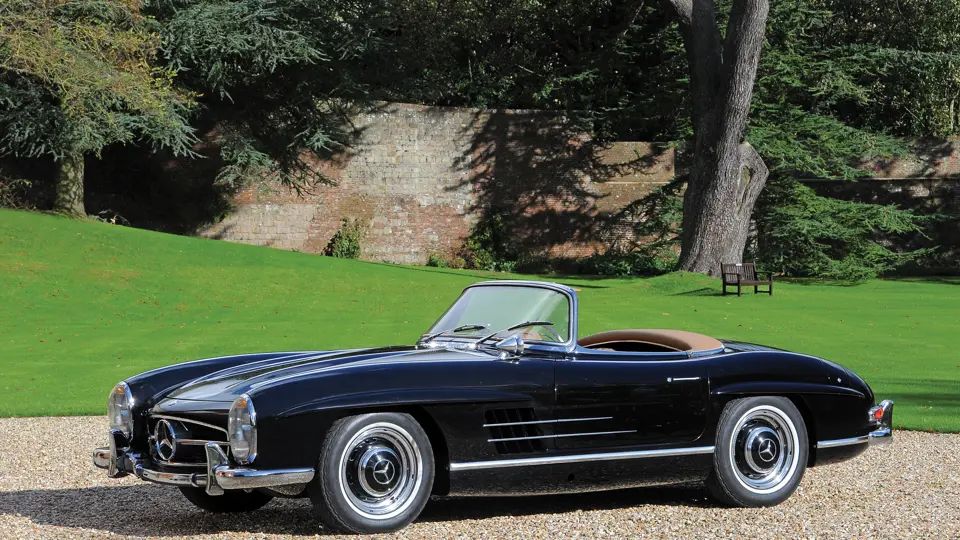
1957 Mercedes-Benz 300 SL Roadster
{{lr.item.text}}
€823,200 EUR | Sold
{{bidding.lot.reserveStatusFormatted}}
- Matching numbers
- Body-off restoration by German marque specialist
- Retrofitted with disc brakes, Euro headlights, and a 3.25 rear axle
- Original radio, tool kit, and jack
- Numéros concordants
- Carrosserie sortant de restauration par des spécialistes allemands
- Rééquipée de freins à disque, phares européens et pont 3,25 :1
- Radio, outillage et cric d’origine
215 bhp (DIN), 240 bhp (SAE), 2,996 cc overhead-camshaft inline six-cylinder engine, four-speed manual transmission, coil-spring independent front suspension, and coil-spring single point swing-axle rear suspension. Wheelbase: 2,400 mm
Moteur six cylindres en ligne, 1 ACT, 2 996 cm3, 215 ch (DIN)/240 ch (SAE), boîte manuelle à quatre rapports, suspension avant indépendante à ressorts hélicoïdaux, essieu arrière brisé à pivot unique. Empattement: 2 400 mm.
The spectacular Mercedes-Benz 300 SL Gullwing was in production for just three years, and during this time, only 1,400 cars were built, largely by hand, in Stuttgart’s finest tradition. Yet, despite the low production volume, Daimler-Benz remained sufficiently convinced of the value of an expensive, image-leading sports car as part of its model line-up to develop an improved open version, resolving the well-documented ventilation issue associated with the Gullwing.
A modified 300 SL Roadster chassis was first spotted in the summer of 1956 at Stuttgart, by the German magazine Auto, Motor und Sport. The improved 300 SL Roadster debuted in the spring of 1957 at the Geneva Motor Show. By the end of that year, the final 70 of the 1,400 Gullwing Coupés and the first 618 of the 1,858 300 SL Roadsters were assembled.
Amongst the Roadster’s many advancements was a lowered central section of the lightweight 300 SL space frame chassis, which created improved entrance and egress. The chassis also featured smaller sills and enlarged doors. Whilst strength was maintained, nonetheless, with the addition of diagonal struts that braced the lowered side sections to the rear tubular members. At the rear, the spare tyre was repositioned below the boot floor, necessitating a smaller fuel tank but maintaining reasonable luggage space.
The Roadster’s suspension was fine-tuned by the repositioning of the single-pivot rear swing axle and the addition of a coil spring that was mounted transversely above the differential and linked to the two axle halves by a vertical strut, which allowed for the use of softer rear springs, thus providing a more comfortable ride and improved handling. Coupled with fatter tyres and a wider track, the Roadster exhibited none of the prior Coupé’s tricky handling characteristics. This specific feature was borrowed from the W196 Grand Prix racing car.
These revisions added some 250 pounds, with the majority of which being attributed to the convertible top and its mechanisms. The snug-fitting roof retracted fully into a well behind the seats, and it was covered with a hinged panel, which made for a sleek, disappearing top body line. Regardless, the car remained an excellent performer, with a factory-claimed 137 mph top speed.
The Roadster offered here was originally delivered in the United States, and it resided in Maryland and California for many years. More recently, it has been exquisitely restored by noted Mercedes-Benz marque specialist Lars Rombelsheim, and it is noteworthy for having an extraordinary number of original major components. The body, engine, and axles are all original and exactly as delivered, with no components replaced, and the car is finished in the same colour combination as original: Black with tan leather upholstery, which is in the correct original grain and pattern.
For everyday driving excellence, the car has been fitted with disc brakes on all four wheels. A modern cooling system with engine pre-heating was installed, along with an electronic ignition and a rear axle rebuilt to the European 3.25:1 ratio, for better high-speed performance. The Roadster still has its original Becker Mexico radio, tool set, and jack, as well as its original manual and service book. European headlamps, one of the most desirable 300 SL Roadster features, were sourced and installed.
The 300 SL Roadster has gone down in history as one of the finest and most desirable sporting cars of its generation. There are beautifully restored examples, and there are cars that are well-sorted for fast driving by nimble hands that are clad in string-back gloves. Offered here is the best of both worlds, and it is ready to bring excitement into a new home.
La spectaculaire Mercedes-Benz 300 SL « papillon » ne connut que trois ans de production au cours desquels 1 400 voitures seulement furent construites en grande partie de façon artisanale selon les meilleures traditions de Stuttgart. Mais en dépit de ce faible volume de production, Daimler-Benz était convaincu de l’intérêt d’inclure dans sa gamme un modèle de sport coûteux et vecteur d’une image d’excellence au point de développer une version décapotable et améliorée techniquement qui éliminait le trop connu problème d’aération posé par le coupé à portes « papillon ».
Un châssis modifié de 300 SL Roadster fut d’abord repéré à l’été 1956 à Stuttgart par le magazine allemand Auto, Motor und Sport. La 300 SL Roadster améliorée fit ses débuts au salon de Genève en mars 157. À la fin de l’année, les 70 derniers (sur 1 400) coupés « papillon » et les 618 premières 300 SL Roadster étaient achevés.
Parmi les nombreuses améliorations du Roadster, on notait l’abaissement de la section centrale du châssis allégé en treillis de la 300 SL qui permettait un accès à bord plus facile grâce à des seuils abaissés et à des portes agrandies. Mais la résistance à la flexion était conservée grâce à l’adoption de tirants diagonaux soudés entre les sections centrales abaissées et les traverses tubulaires arrière. La roue de secours repositionnée sous le plancher du coffre entraîna la réduction la capacité du réservoir tout en maintenant un volume de coffre raisonnable.
La suspension de la 300 SL Roadster fut révisée en repositionnant le pivot du demi-essieu oscillant et en introduisant un ressort hélicoïdal monté transversalement au-dessus du différentiel et articulé sur les deux demi-essieux par une biellette verticale, ce qui permit d’utiliser des ressorts arrière plus flexibles donnant un meilleur confort de marche et un comportement plus sain. Chaussé de pneus plus larges et doté d’une voie arrière supérieure, le Roadster ne présentait plus les réactions dynamiques souvent imprévisibles du coupé. Cette solution avait été empruntée à la voiture W196 de Grand Prix.
Ces évolutions avaient introduit un surpoids de 112 kg environ dont la plus grande partie provenait du capotage et de son mécanisme. La capote très bien ajustée se repliait en totalité derrière les sièges dans un compartiment que venait recouvrir un panneau articulé afin de rétablir une ligne de carrosserie épurée. Quoi qu’il en soit, la voiture demeurait très performante avec une vitesse de pointe de 220 km/h (donnée usine).
La 300 SL Roadster proposée ici fut livrée neuve aux Etats-Unis où elle résida pendant de nombreuses années dans le Maryland et en Californie. Superbement restaurée récemment par le réputé spécialiste Mercedes-Benz Lars Rombelsheim, elle est remarquable par le nombre extrêmement élevé d’organes majeurs d’origine. Caisse, moteur et essieux sont d’origine et tels qu’ils ont été livrés sans éléments remplacés. La voiture est peinte dans la même teinte qu’à sa sortie d’usine, en noir avec sellerie fauve avec un cuir de texture identique et présentant les mêmes motifs.
Pour en faciliter la conduite au quotidien, la voiture a été équipée de freins à disque sur les quatre roues. Un système de refroidissement avec préchauffage du moteur a été installé ainsi qu’un allumage électronique et un rapport final européen de 3,25 :1 pour une vitesse de pointe maximale. La 300 SL Roadster possèdent son récepteur de radio Becker Mexico d’origine, son jeu d’outillage et son cric ainsi que son manuel et son carnet d’entretien d’origine. Des projecteurs européens, un des équipements le plus appréciables sur la 300 SL Roadster, ont été trouvés et installés.
La 300 SL Roadster est entrée dans l’histoire comme une des plus belles automobiles sportives de sa génération. Il en existe de magnifiques exemplaires restaurés et d’autres très préparés pour être pilotés par des amateurs de performances pures. Celle-ci réunit le meilleur des deux écoles pour la plus grande satisfaction du passionné et du sportif.
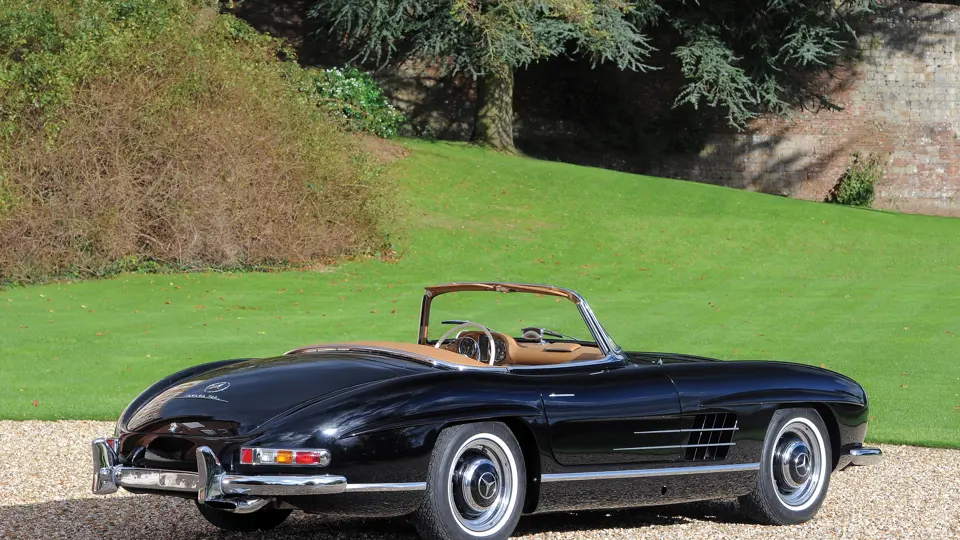
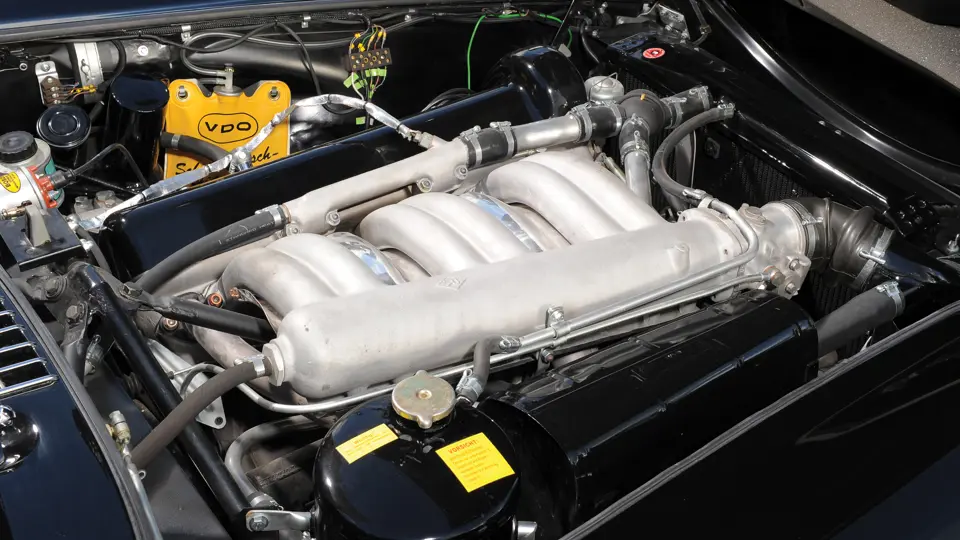


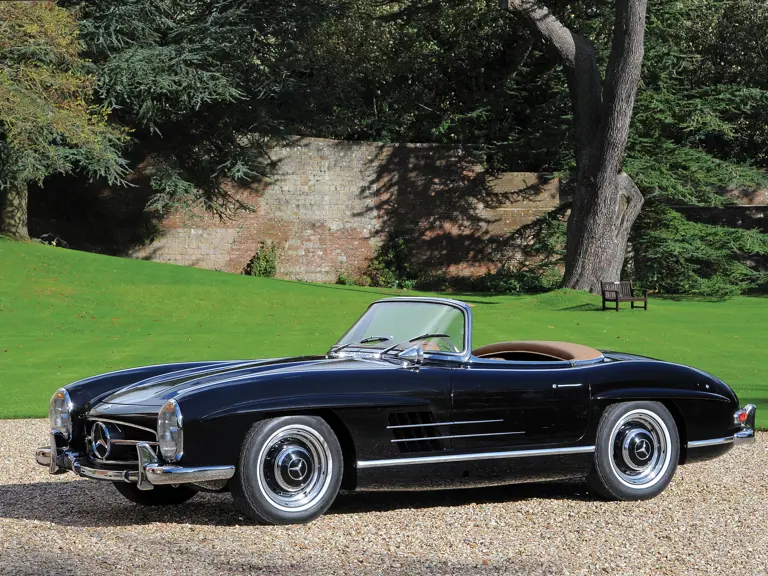
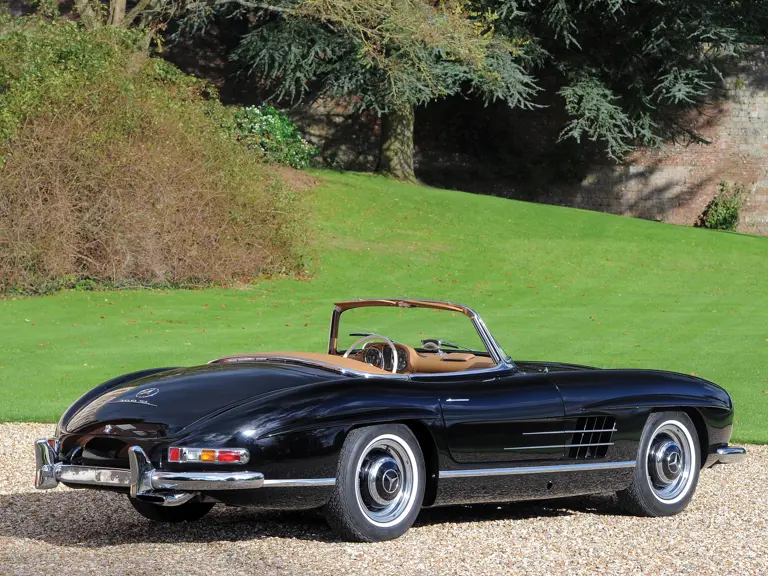
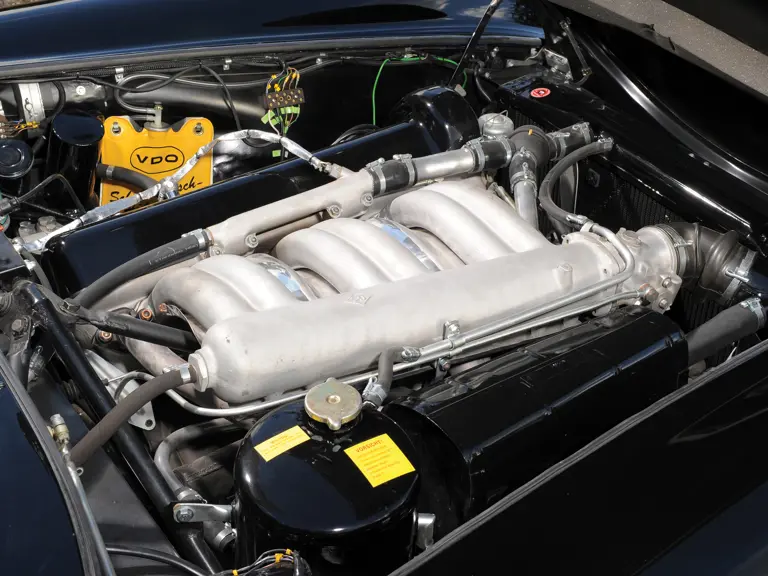
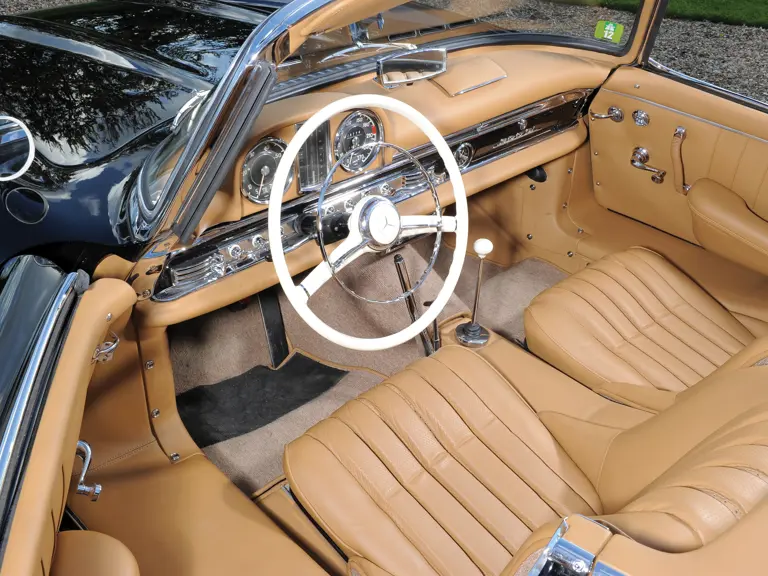
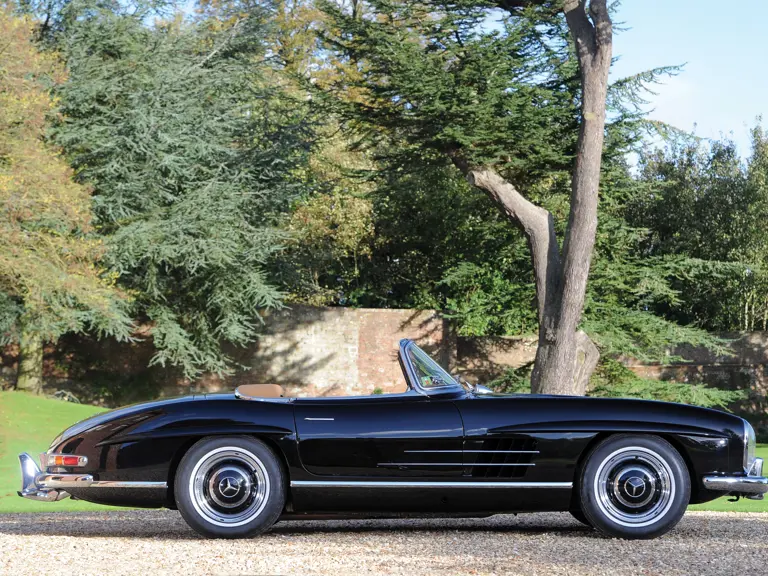
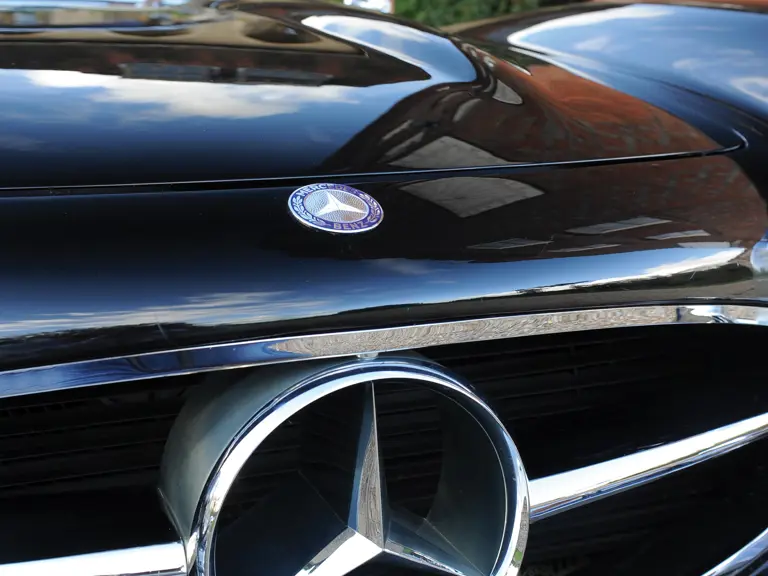
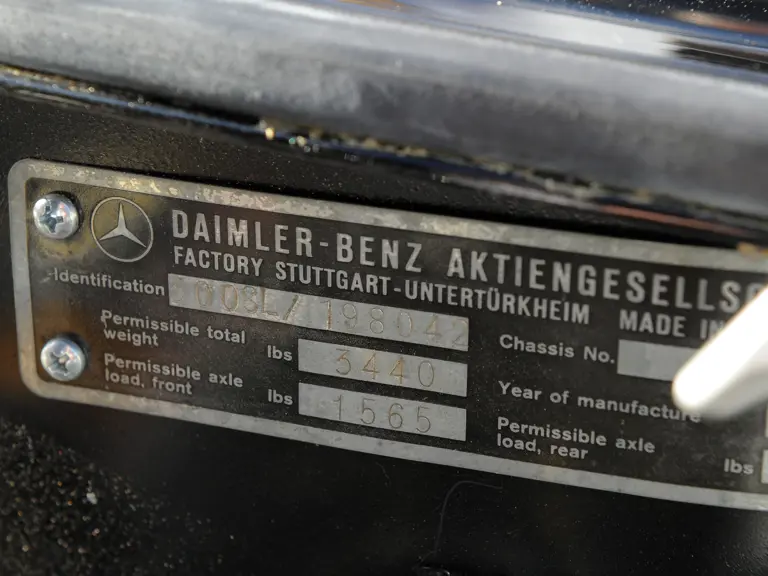
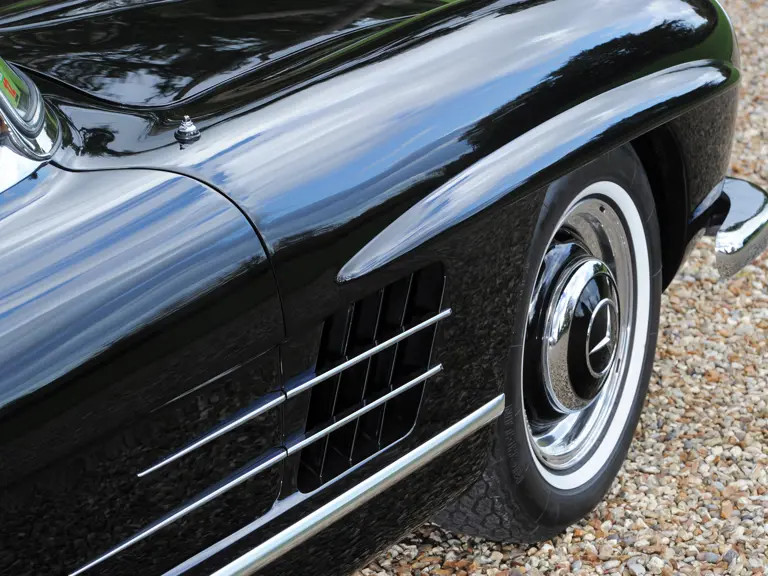
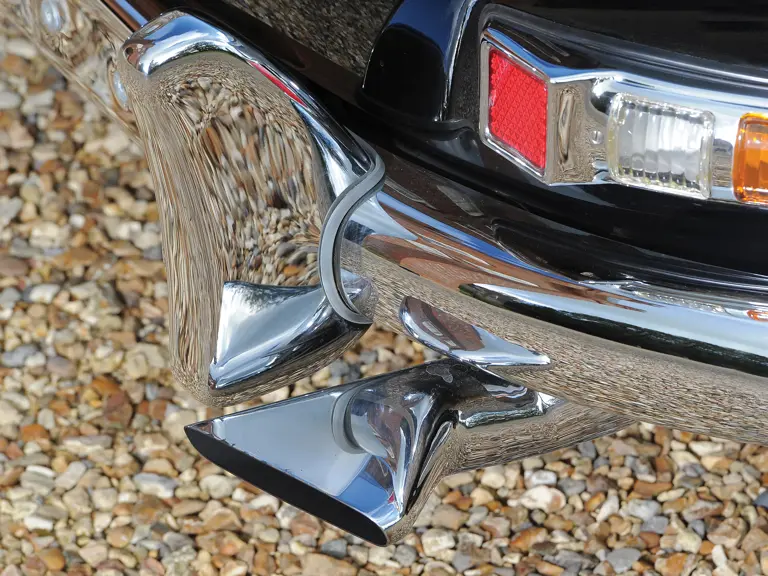
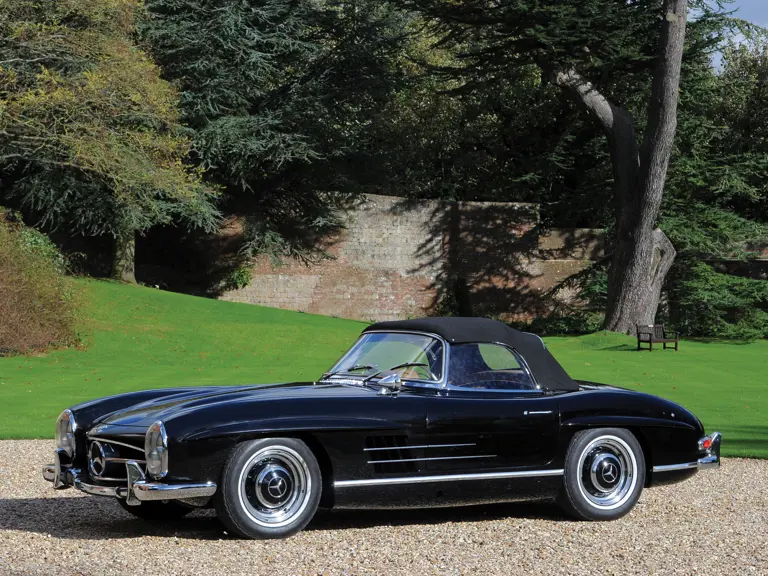
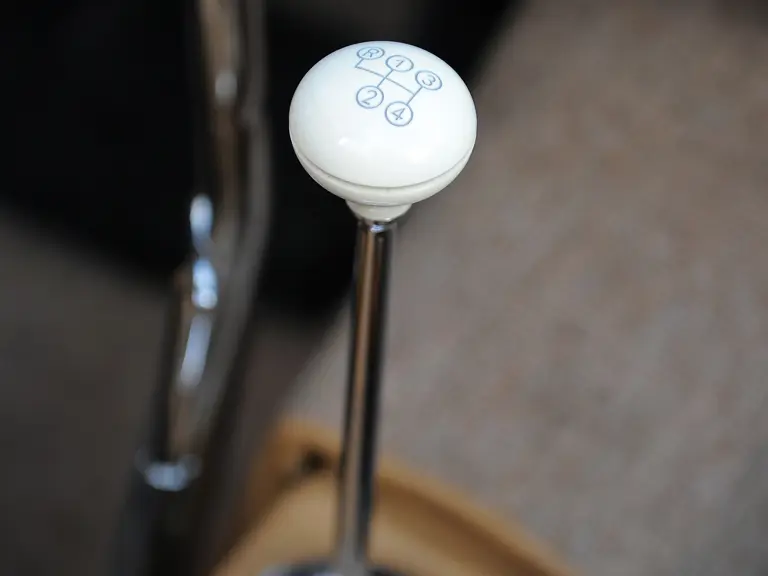
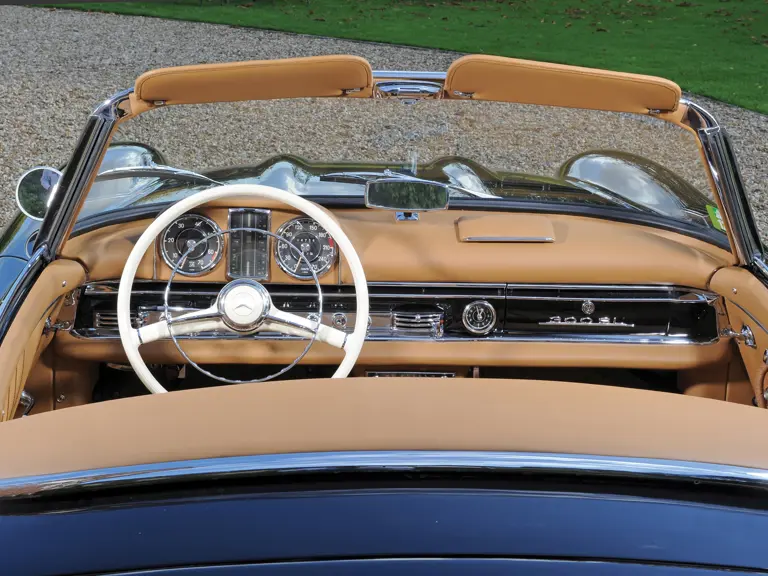
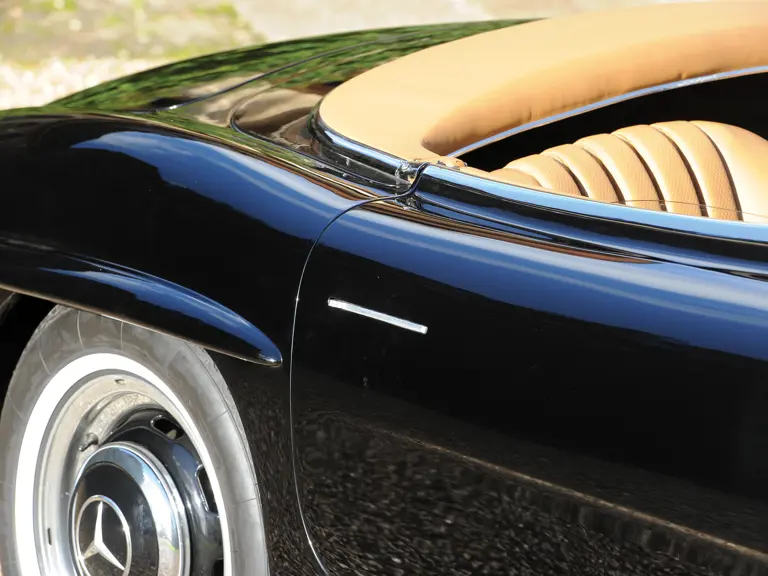
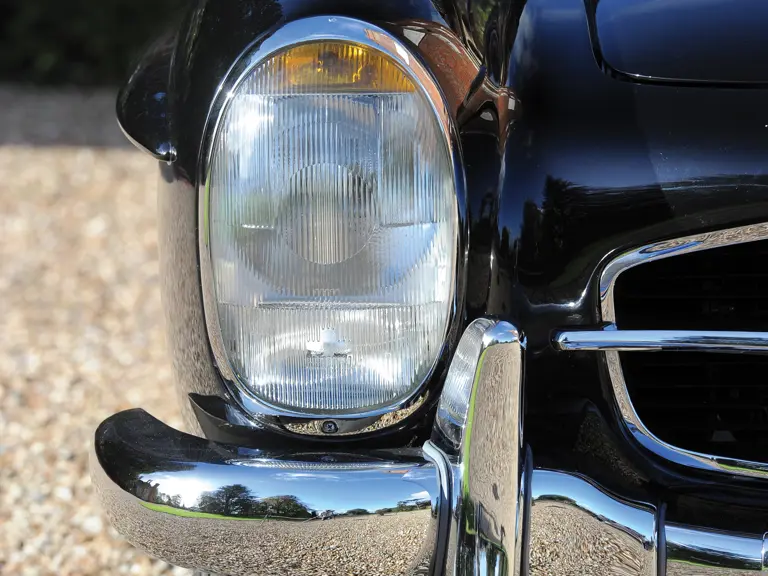

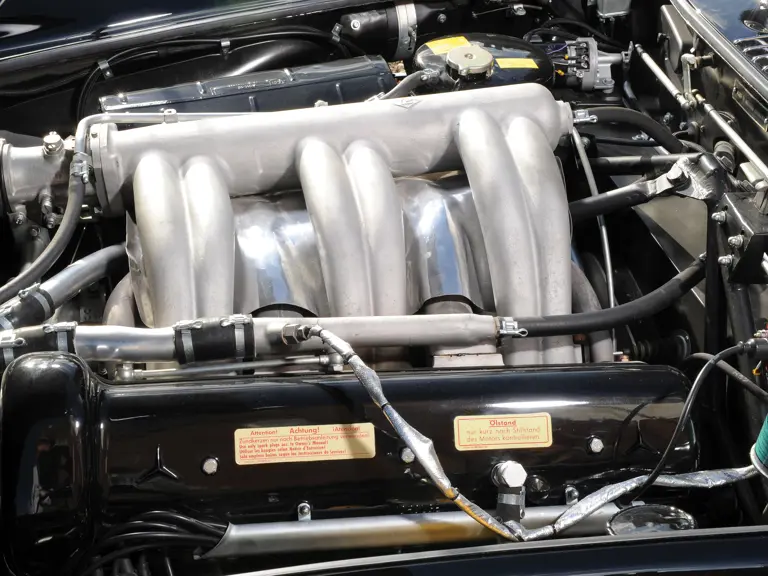
 | Paris, France
| Paris, France
